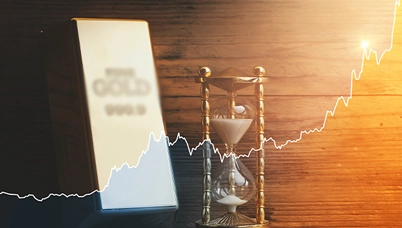What is the capacity of your mutual fund?
Posted On Sunday, Jan 01, 1950
"Huh?
What is that supposed to mean?
Why should a mutual fund have a "capacity" limit?"
That is the response I got from many financial honchos and industry leaders when I tossed this simple question at them: "Please can you tell me the capacity of the mutual fund you have invested in?"
"Well", I countered", if I was to pose the question to ACC, the cement company, they would tell me: our annual production capacity for cement is 20 million tonnes per annum.
Tata Steel would tell me that their annual production capacity in India is 6.8 million tonnes per annum.
Bajaj Auto would tell me that their annual production capacity is 3 million 2-wheelers in a year.
So, therefore, I ask again: what is the capacity of the mutual fund you have invested in?"
...Pause...
Before we go any further, please could you perform this quick check?
Please call your distributor or financial advisor and ask them this question: "What is the capacity of the mutual fund that I have invested in?"
While you are on hold waiting for their answer, a few clarifications from my side:
- I am raising these issues at a point in time when the fund management industry is being forced by regulatory diktat to stop being an asset gathering machine riding on the coat tails of a commission-led distribution system; now mutual funds should be selected for the risks they take and the predictability of their performance.
- For those independent financial advisors and distributors who have always looked after the interests of their clients and never allowed commission structures to influence the advice they gave clients, this question is a fantastic differentiator. In fact, we will be happy to give you more analytical tools that will help you give better advice to your growing investor base;
- This is not a "sour grape" question asked by a "loser" trying to deflect the issue of "bad performance" numbers. The performance of the Quantum Long Term Equity Fund is very good for the stated long term investment objective that we have. Our 1-week return numbers are not good - but that is a 1-week return number!
| Returns (%) | 1 Week Ended | 1 Month Ended | 3 Month Ended | 6 Month Ended | 1 Year Ended | 2 Year Ended | 3 Year Ended |
| Returns up to 1 year are absolute and over 1 year is annualised. | As on September 1, 2009 | ||||||
| Quantum Long Term Equity Fund | 0.13 | 3.06 | 14.38 | 80.35 | 18.49 | 8.56 | 12.48 |
| Category Average (Equity Diversified) | 0.50 | 2.05 | 8.74 | 77.39 | 9.45 | 0.04 | 9.97 |
| BSE-30 Total Return Index (benchmark) | -0.85 | -0.67 | 5.44 | 76.02 | 8.24 | 2.22 | 11.58 |
| Quantum Long Term Equity Fund Ranking | 141 | 66 | 27 | 75 | 30 | 20 | 56 |
| Total | 240 | 234 | 229 | 213 | 206 | 179 | 155 |
| How many funds have we done better than? | 41.2% | 71.7% | 88.2% | 64.7% | 85.4% | 88.8% | 63.8% |
Quantum Long Term Equity Fund was launched in March 2006
...and Resume...
So, back in search of the answer to the question: why should mutual funds have a capacity limit?
Well, back to ACC and cement.
Let's assume that the government of India's 5,145th committee meeting on infrastructure finally decides to award a contract to a cement manufacturer to buy 80 million tonnes of cement every year. The price at which the government wishes to buy this cement may not be the issue - since the price will be fixed for all bidders - but the "track record" of cement produced is a key criterion.
The government buyers will ask the company:
- Can you show me samples of the quality of cement you have produced throughout the year?
- Was this cement produced and tested on small production volumes - or when your factory was running full steam?
- If I give you this large order, is the consistency and quality of the cement likely to remain the same?
What the buyer really wants to know is: what guarantee do I have that the quality you showed me on small production size will still hold true for a large production size?
Quantum Long Term Equity Fund has shown you the track record in the table above based on a total fund size of Rs 38 crore.
A small corpus by any standard.
Will the Fund behave the same way - have the same risk-return characteristics - if you all invest Rs 2,000 crore more in Quantum Long Term Equity Fund right now?
Or is Quantum Long Term Equity Fund cheating?
Because the Fund has a small asset base, a small corpus, are the fund managers at Quantum buying shares of small-cap companies whose price movements may be easy to fool around with. Small cap companies have lower volumes and are more susceptible to price - and therefore performance - manipulation.
With this sexy track record based on a "fake" underlying portfolio, the Quantum Long Term Equity Fund could raise a lot of money.
A cement factory can produce the highest grade cement in a small pilot plant or in a small batch run - can it replicate the quality in large volumes?
Say Quantum Long Term Equity Fund gets an extra Rs 2,000 crore and the AuM surges from Rs 38 crore to Rs 2,038 crore in one day.
Will the fund manager then be able to replicate his portfolio - buy more of the same stocks that are currently held in the portfolio?
Will this now larger fund have the same portfolio characteristics in the future?
Is what the investor shown, what the investor ends up getting?
Is the first tonne of cement that rolls of the ACC plant, the same quality as the 22nd millionth tonne of cement that rolls off the plant?
Is the quality of the first 2-wheeler that glides down the conveyor belt of Bajaj Auto's factory, the same quality as the 350,000th 2-wheeler?
Is the first rupee in Quantum Long Term Equity Fund, invested the same way as the Rs 2,038th crore rupee?
Track record and capacity
A pilot plant is what a manufacturer wants to set up to see if the technology works on a small scale.
Then, when the chinks are ironed out, the manufacturer heads towards a proper plant and the product is ready for production.
With consistency of quality and other characteristics.
I can't tell you what other mutual funds do, but I can share with you the disciplined portfolio construction process that allows us to put a capacity figure on the Quantum Long Term Equity Fund.
| Capacity of the Fund | Rs. 5,000 crore |
| Maximum number of stocks we will own | 40 |
| Average holding (in %; 100% divided by 40) | 2.50% |
| Minimum % holding in portfolio (we will own less of some stocks and more of some stocks) | 2.00% |
| Rupee value of the 2% minimum holding (Rs 5,000 crore x 2%) | Rs 100 crore |
| We typically own stocks for 5 years | 60 months |
| We don't mind spending 5% of that time trying to buy or sell stocks - we are patient (60 months x 5%) | 3 months |
| Each month has 22 trading days on average | 66 days |
| That means we need to buy, every day (Rs 100 crore divided by 66 trading days) | Rs 1.5 crore per day our buying or selling |
| On any given day we don't wish to be more than 33% of the daily volume, therefore the stock we buy must have a daily trading volume of (Rs 1.5 crore divided by 33%) | Rs 4.5 crore per day should be the average daily trading volume for the stock |
(Note: if you have followed the table above, there is no need to read this section as it describes in a little more detail what the Table already says.)
STEP 1: How big is the market and what market share could I have?
We began with an assumption that we would manage Rs 5,000 crore of total assets in the long term equity product.
Why Rs 5,000 crore?
Well, the total size of the equity mutual funds was about Rs. 100,000 crore in the year 2005 and we figured that, with a 10% growth in the industry, by the year December 2015 (ten years later) the size of the equity mutual funds would grow to Rs 259,000 crore. With a 2% market share, we would have Rs. 5,187 crore in the Quantum Long Term Equity Fund.
We rounded that down to Rs 5,000 crore.
STEP 2: Therefore, what kind of stocks can I buy?
On the portfolio side, we know that we are "value" investors and we have a research process that allows us to sift out the "good" from the "bad" stocks.
But we don't wish to buy too many stocks as that defeats the purpose of our trying to pick "winners". If we buy many stocks we will move just in line with the broad market - you may as well buy an Index fund, then.
So we own a relatively small number of stocks.
The "concentrated" portfolio of the Quantum Long Term Equity Fund typically comprises of 25 to 40 stocks.
Mathematically, if 100% of my money is lying in 40 stocks, then I can invest - on an average - 2.5% in any one company.
Some companies will be "favourites" and will have higher weights, and some will be liked (but not as much) and have lower weights.
So we decided that 2% would be the minimum weight in any stock. With a 2% weight, the movement in the share price of that stock has an "impact" on our portfolio.
So, if we have Rs 5,000 crore as the capacity of the Quantum Long Term Equity Fund, and 2% is the minimum that we own in any stock, then we should be able to buy at least Rs 100 crore (Rs 5,000 crore x 2%) of that stock.
STEP 3: Make sure we buy actively traded or liquid stocks
Now, Rs 100 crore is a fair amount of money.
Buying so much of any one stock could heavily influence the share price of that stock.
But not if we have another set of "rules" in place.
Rule # 1: From our past experience as investment managers, we have seen that we typically own stocks for 5 years or 60 months - we are boring long-term owners of shares;
Rule # 2: We are patient: since we own stocks for 60 months we do not mind taking time to buy or sell the minimum 2% ownership that we could have in any one stock; here we assume that we are happy to spend 5% of the time we own a stock to buying into it - or selling out of it. This 5% of 60 months is 3 months.
3 months is about 66 trading days.
Therefore, mathematically, Rs 100 crore spread over 66 trading days means that we should - on average - buy (or sell) Rs 1.5 crore worth of shares a day (Rs 100 crore divided by 66 days).
Rule # 3: We do not wish to be more than 1/3rd of the market's daily trading volume in that stock in any one day. Therefore, the daily trading volume of the stock we are buying needs to be Rs 4.5 crore (Rs 4.5 crore x 33% gives you the Rs 1.5 crore we need to buy every day for 66 trading days);
Rule # 4: Avoid the volume spikes: many times stocks become favourites and everyone runs to buy them. This causes a spike in their volumes. To minimise these frenzied spikes, we look at the average volume per day over the past one year. So, we prefer to buy stocks with average daily trading volume of Rs 4 crore each day for the past one year. This reduces the impact of being stuck in stocks that are less actively traded - which we cannot buy more off as we get more of your long term savings flowing into the Quantum Long Term Equity Fund.
Mutual funds are to be bought by you, not sold to you.
No one asked us too many questions on our investment strategy when we launched the Fund in February 2006.
The questions we have always been asked were related to distributor commissions.
Not related to our investment process.
But the noise of the distribution channels is now out of the way.
We can discuss our investment objectives and processes.
Like two adults having a mature and meaningful discussion.
You no longer need to be sold funds based on how many pages of advertisements they buy in newspapers and magazines.
You no longer need to be sold funds that paid the highest commissions to the distributors.
You now need to focus on the investment processes and the disciplines of each mutual fund product that is offered to you.
You need to ensure that the funds you buy have the investment objectives that match your needs.
And that their past track record is replicable in terms of characteristics (not performance).
Every fund must have a capacity.
Every fund will have a bottleneck to its capacity.
These are all mathematical formulae that could be part of a process.
Bajaj Auto may have a bottleneck in its paint shop that prevents it from producing its 350,001st motorbike.
ACC may have a bottleneck in its power availability to make that extra tonne of cement.
The key is that the factory folks know their capacity - and their bottlenecks. They can tweak a few things, iron out the bottlenecks and get to a new level of capacity...
So, does the fund you own have a capacity - and is it aware of the bottlenecks that limit it from growing further?
And has the characteristics of the fund changed over time?
Did it own more small-cap stocks when the fund was small and more large-cap stocks when the fund was big?
A mutual fund house focused on growing its assets will not really care about "capacity" - its objective is to maximise the size of the assets they manage.
A fund manager focused on investing - irrespective of the size of the assets in the fund - will keep an eye on the capacity of the portfolio and the consistency of the characteristics of the portfolio.
The distributors and financial advisors who never liked the commission-led business model can now start analysing funds and understanding the investment philosophy and investment discipline of each mutual fund.
Some claim that investing in shares is an art.
Others say it is a science.
Maybe it is a combination of both: it is an art and a science.
But it better have a process to support it.
With the ability to put a stated capacity on the product being sold.
Just like ACC, Bajaj Auto, and Tata Steel have stated capacities.
Otherwise, what an investor buys may not end up being what the investor wished to invest in.
| Quantum Long Term Equity Fund | Quantum Gold Fund (NSE symbol: QGOLDHALF) | Quantum Liquid Fund | |
| Why you should own it: | An investment for the future and an opportunity to profit from the long term economic growth in India | A hedge against a global financial crisis and an "insurance" for your portfolioA hedge against a global financial crisis and an "insurance" for your portfolio | Cash in hand for any emergency uses but should get better returns than a savings account in a bank |
| Suggested allocation | 80 % | 20% | Keep aside money to meet your expenses for 6 months to 2 years |
Disclaimer : Past performance may or may not be sustained in the future. Mutual Fund investments are subject to market risks, fluctuation in NAV's and uncertainty of dividend distributions. Please read offer documents of the relevant schemes carefully before making any investments. Click here for the detailed risk factors and statutory information"
Ajit Dayal, the author is a Director in Quantum Information Services Private Limited and Quantum Asset Management Company Private Limited. Views expressed in this article are entirely those of the author and may not be regarded as views of the Quantum Mutual Fund or Quantum Asset Management Company Private Limited or Quantum Information Services Private Limited.
Mutual Fund Investments are subject to market risks. Please read the offer documents of the respective schemes before making any investments
Note: This article was first carried on www.equitymaster.com
Related Posts
-

Understanding GIPS: The Global Standard for Performance Reporting
Posted On Wednesday, Jan 14, 2026
In the world of investing, everyone loves a good performance number.
Read More -

Equity Monthly for January 2026
Posted On Friday, Jan 02, 2026
Indian markets remained range-bound in 2025
Read More -

Gold Monthly for January 2026
Posted On Thursday, Jan 01, 2026
Gold Market Review and Outlook: 2025–2026
Read More



